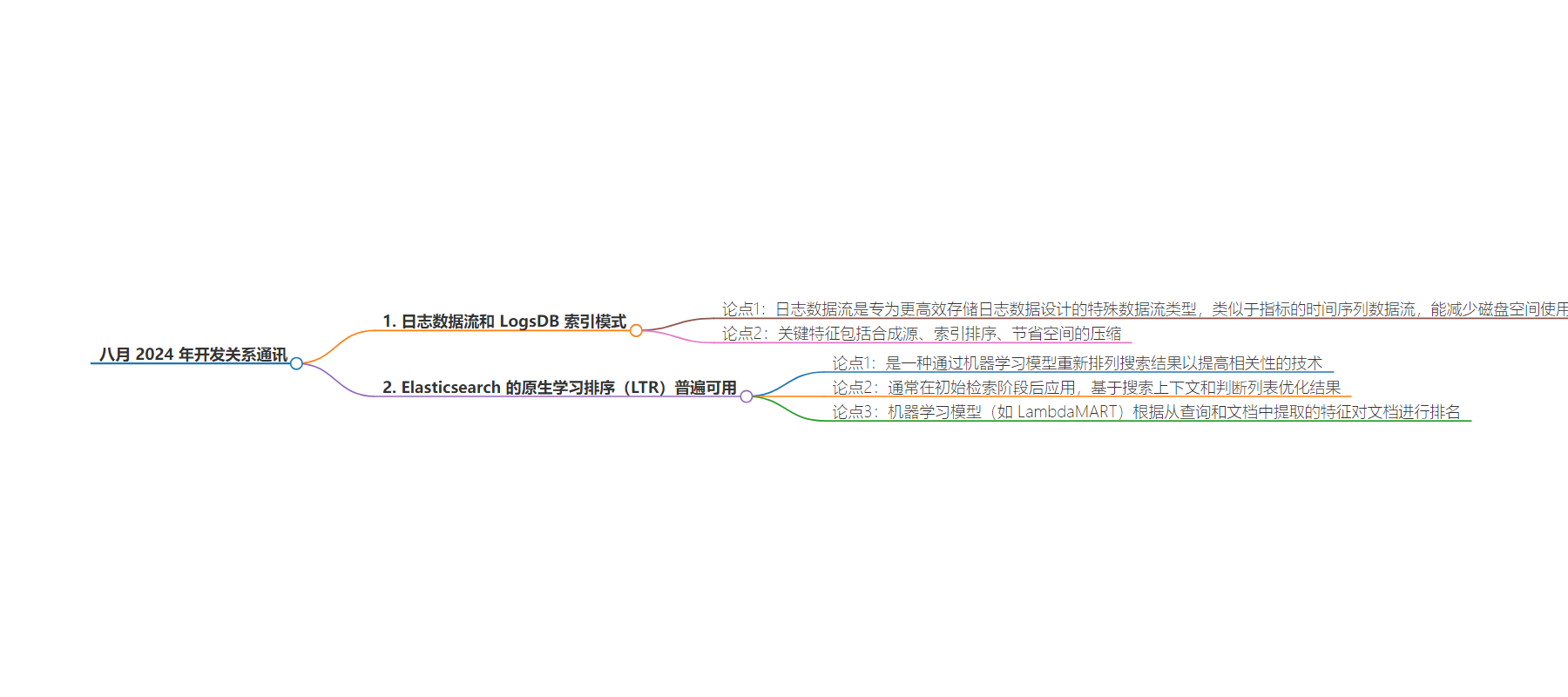包阅导读总结
1. `DevRel newsletter`、`Logs data stream`、`Elasticsearch`、`Learning to Rank`、`Compression`
2. 本文主要介绍了 2024 年 8 月 DevRel 时事通讯的相关内容,包括日志数据流的特点及优势,如节省磁盘空间,以及 Elasticsearch 原生的学习排序(LTR)技术的可用性和应用原理。
3.
– Logs data stream
– 是专为高效存储日志数据的特殊数据流类型
– 相比常规数据流能减少 2.5 倍磁盘空间使用,节省程度取决于数据集
– 关键特性包括合成源、索引排序、节省空间的压缩
– Elasticsearch’s native Learning to Rank (LTR)
– 是一种用机器学习模型重新对搜索结果排序以提高相关性的技术
– 通常在初始检索阶段后应用,根据搜索上下文和判断列表优化结果
– 模型常为梯度提升决策树,基于从查询和文档提取的特征对文档排序
思维导图:
文章地址:https://www.elastic.co/blog/devrel-newsletter-august-2024
文章来源:elastic.co
作者:Elastic DevRel team
发布时间:2024/8/15 15:09
语言:英文
总字数:1430字
预计阅读时间:6分钟
评分:82分
标签:Elasticsearch,开发者关系,语义搜索,向量数据库,学习排序
以下为原文内容
本内容来源于用户推荐转载,旨在分享知识与观点,如有侵权请联系删除 联系邮箱 media@ilingban.com
Logs data stream and LogsDB index mode: A logs data stream is a specialized data stream type designed for more efficient storage of log data, similar to the time series data stream for metrics. In our benchmarks it can reduce the disk space usage by 2.5x over regular data streams, though the exact savings depend on the specific data set.
Key features of a logs data stream include:
-
Synthetic source: The _source field occupies a significant amount of disk space. Instead of storing the documents exactly as requested, Elasticsearch can reconstruct source content from indexed fields on the fly upon retrieval. Synthetic source is now also available on all field types.
-
Index sorting: Reduces storage footprint by sorting indices by host.name and @timestamp at index time.
-
Space-efficient compression: Applies more efficient compression for fields with doc_values enabled.
Elasticsearch’s native Learning to Rank (LTR) is generally available: Learning to Rank is a technique that improves relevance by using a machine learning (ML) model to re-rank search results. Typically, LTR is applied after an initial retrieval stage, refining the results based on a search context and a judgment list. The search context includes user queries and potentially other user-related data while the judgment list is a data set of query-document pairs labeled with relevance scores, which is used to train the model. The ML model, often a Gradient Boosted Decision Tree (GBDT) like LambdaMART, ranks documents based on features extracted from the query and documents.
